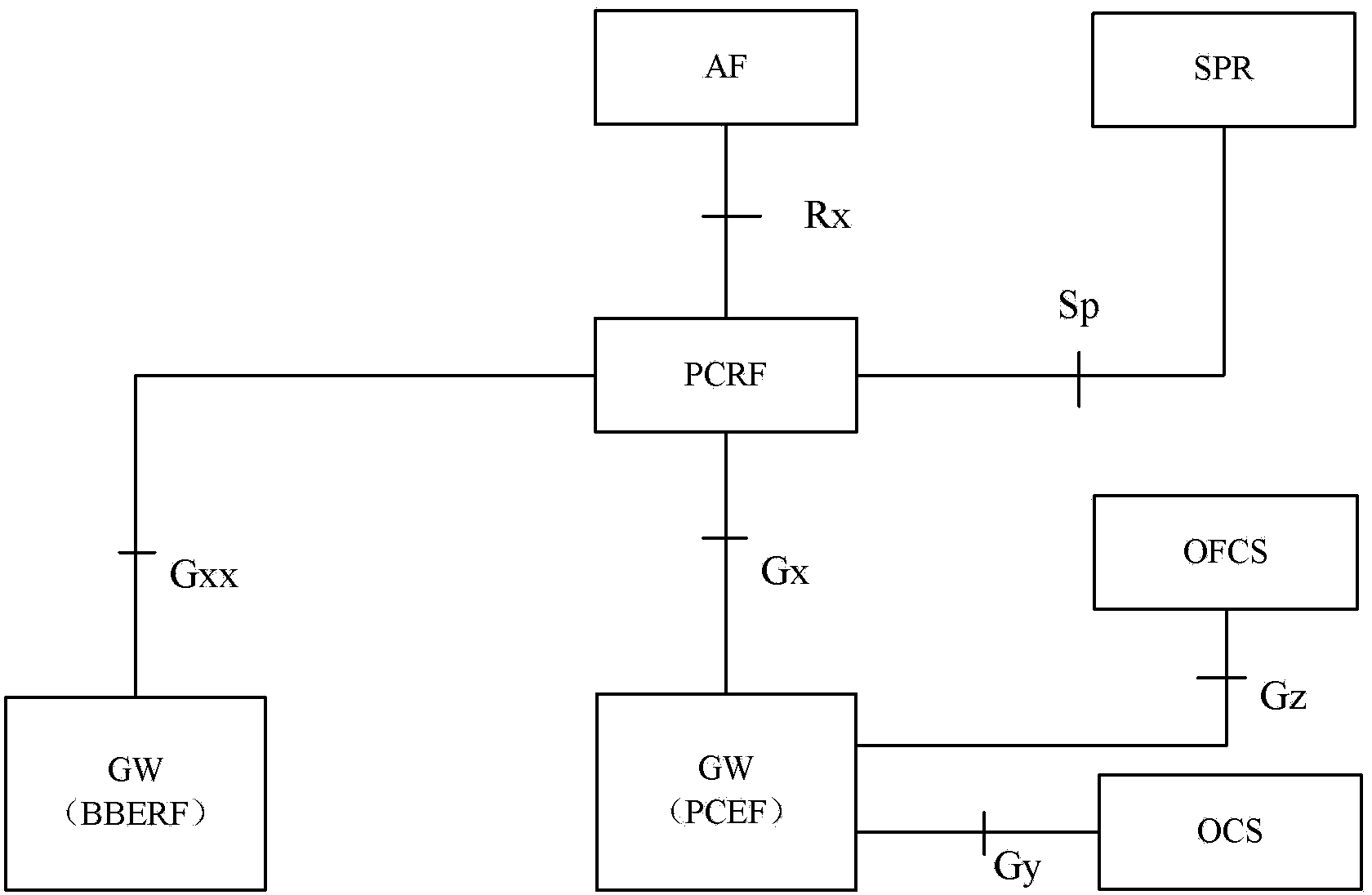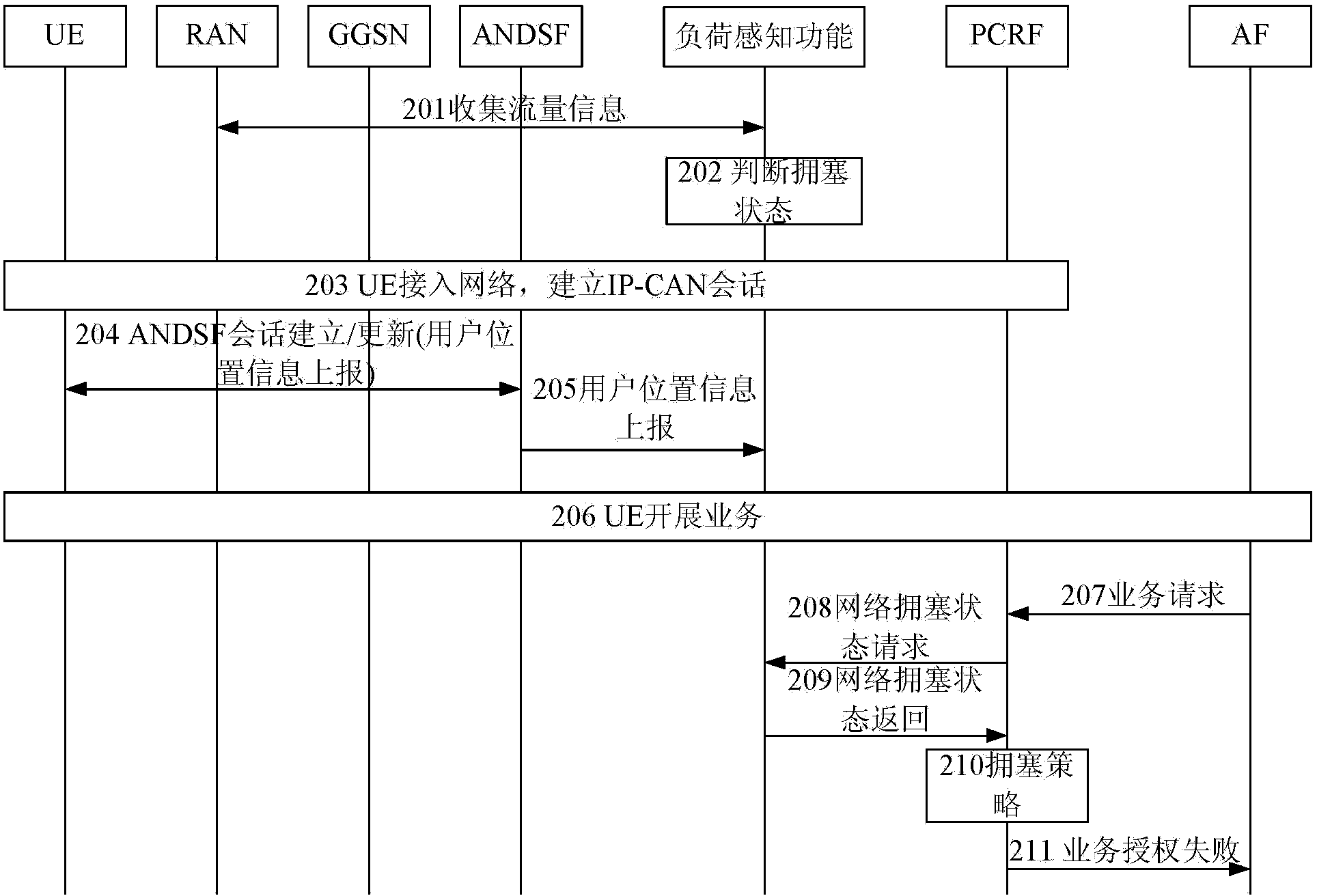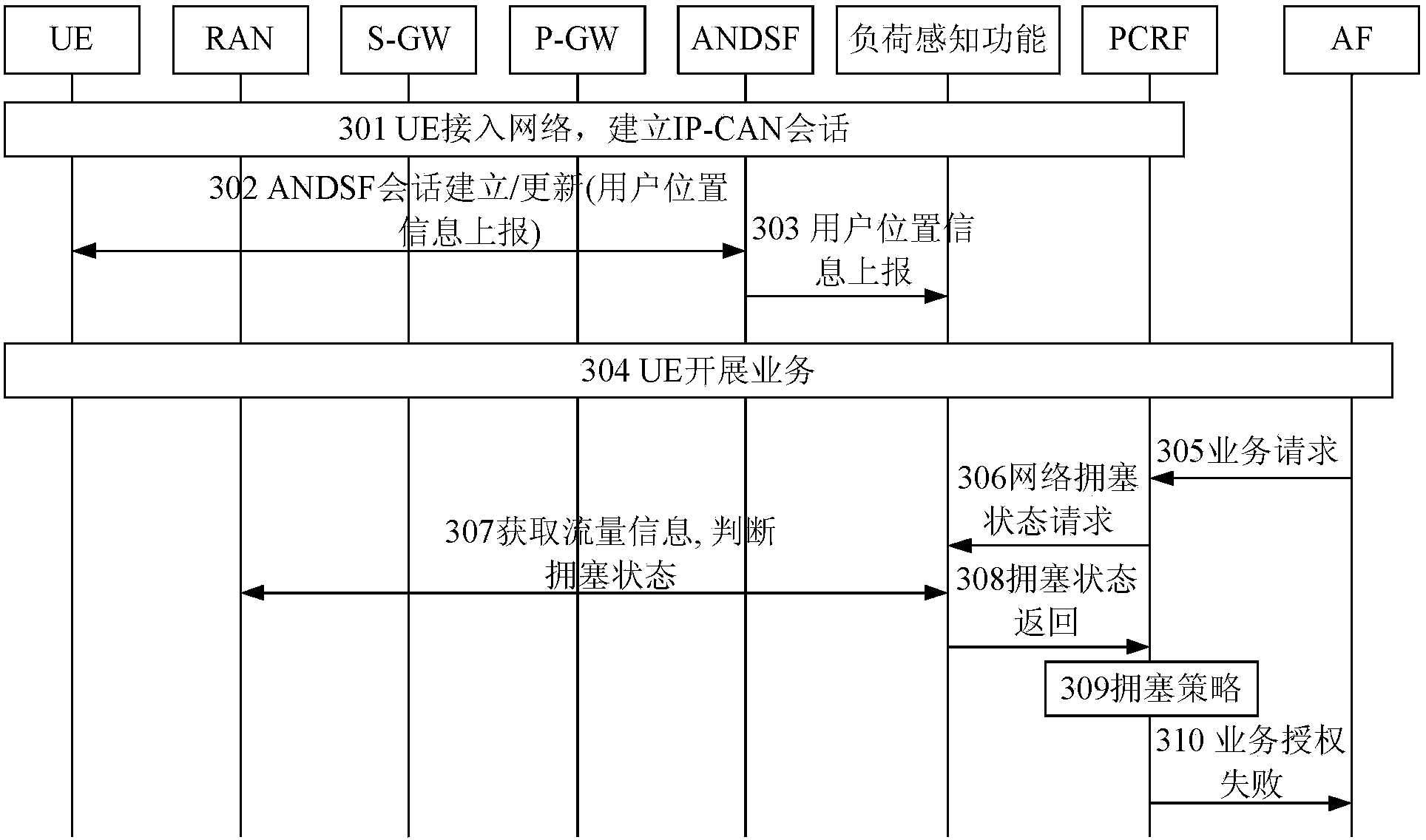Method for controlling network congestion and load perception function
A technology for sensing functions and controlling networks, applied in the field of communication, can solve problems such as increasing a large amount of costs, and achieve the effect of reducing network load and network congestion
- Summary
- Abstract
- Description
- Claims
- Application Information
AI Technical Summary
Problems solved by technology
Method used
Image
Examples
Embodiment 1
[0060] This embodiment describes that the load sensing function collects the traffic information of each cell, and then judges the congestion state of the cell. Each user reports the latest user location information to the load sensing function through the ANDSF when accessing the network or switching over the access network. When a user starts a new service, the PCRF performs resource authorization for the service according to the congestion state of the cell used by the user. If it is congested, new services are rejected to alleviate network congestion. Such as figure 2 As shown, the process description is as follows:
[0061] 201: The load sensing function periodically collects traffic information of all cells and cell identities of corresponding cells from access network equipment (such as eNB);
[0062] 202: The load sensing function determines the congestion state of the wireless access cell accordingly;
[0063] For example, each wireless access cell reports the ce...
Embodiment 2
[0084] This embodiment describes that each user reports the latest user location information to the load sensing function through the ANDSF when accessing the network or when an access network switch occurs. When the PCRF authorizes the new service launched by the user, it requests the congestion status from the load sensing function, and the load sensing function obtains the congestion status of the cell accordingly, and returns it to the PCRF. If it is congested, new services are rejected to alleviate network congestion. Such as image 3 As shown, the process description is as follows:
[0085] 301: The user accesses the network, and establishes an IP-CAN session between the P-GW and the PCRF;
[0086] 302: The user reports the user location information and user identification to ANDSF;
[0087]The user location information is, for example, information such as a cell ID (cell id) of a cell used by the user, TAI, or GPS.
[0088] When the user initially establishes a sess...
Embodiment 3
[0100] This embodiment describes that when the load sensing function determines that the cell is congested according to the collected traffic information, it notifies the PCRF and requires the PCRF to adjust the congestion policy of the users under the cell, as Figure 4 As shown, the process description is as follows:
[0101] 401: The load sensing function periodically collects traffic information of all cells and cell identities of corresponding cells from access network devices (such as eNBs);
[0102] 402: The load sensing function determines the congestion state of the wireless access cell accordingly;
[0103] 403: the user accesses the network, and establishes an IP-CAN session between the P-GW and the PCRF;
[0104] 404: The user reports the user location information and user ID to ANDSF;
[0105] The user location information is, for example, information such as a cell ID (cell id) of a cell used by the user, TAI, or GPS.
[0106] When the user initially establish...
PUM
 Login to View More
Login to View More Abstract
Description
Claims
Application Information
 Login to View More
Login to View More - R&D
- Intellectual Property
- Life Sciences
- Materials
- Tech Scout
- Unparalleled Data Quality
- Higher Quality Content
- 60% Fewer Hallucinations
Browse by: Latest US Patents, China's latest patents, Technical Efficacy Thesaurus, Application Domain, Technology Topic, Popular Technical Reports.
© 2025 PatSnap. All rights reserved.Legal|Privacy policy|Modern Slavery Act Transparency Statement|Sitemap|About US| Contact US: help@patsnap.com



